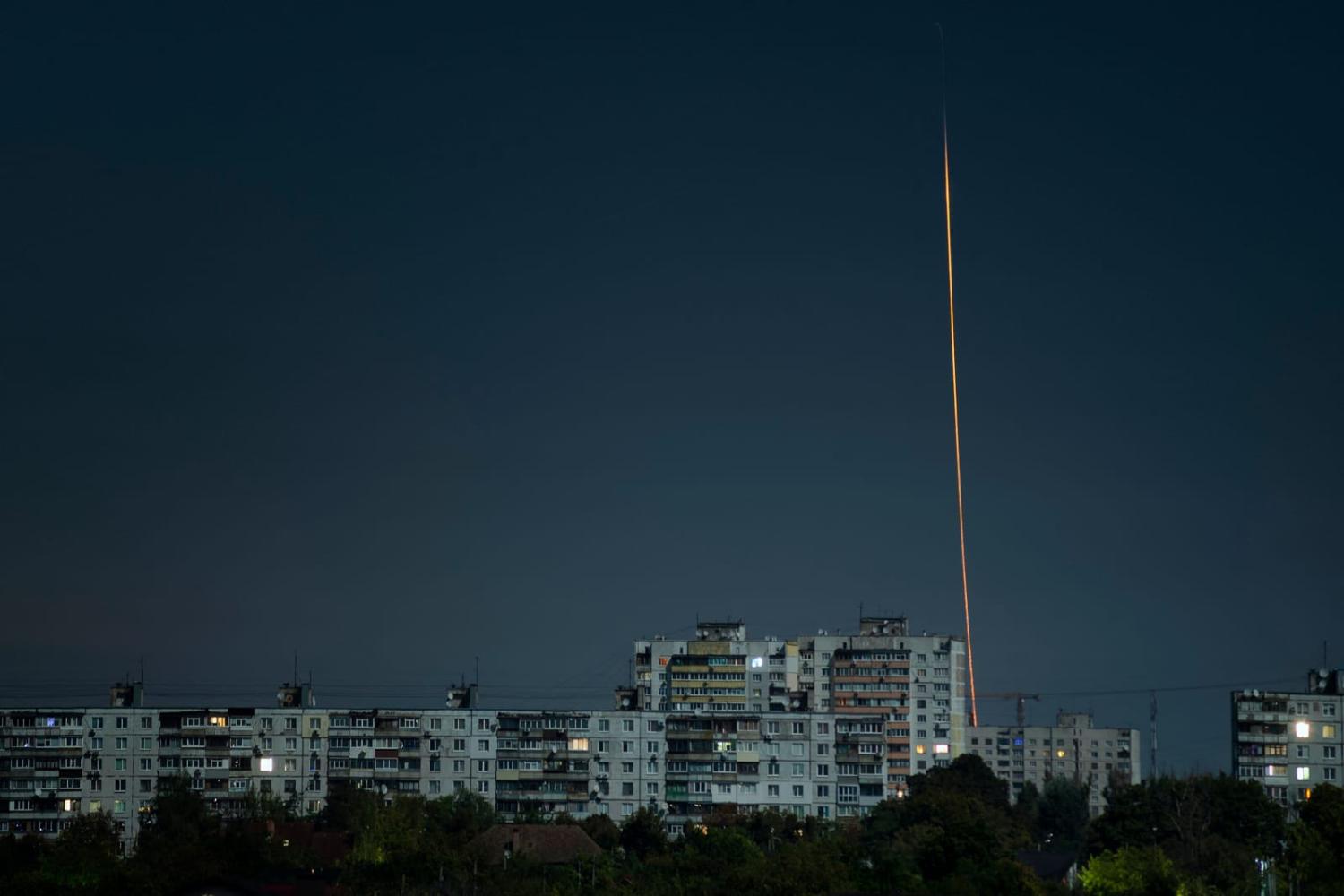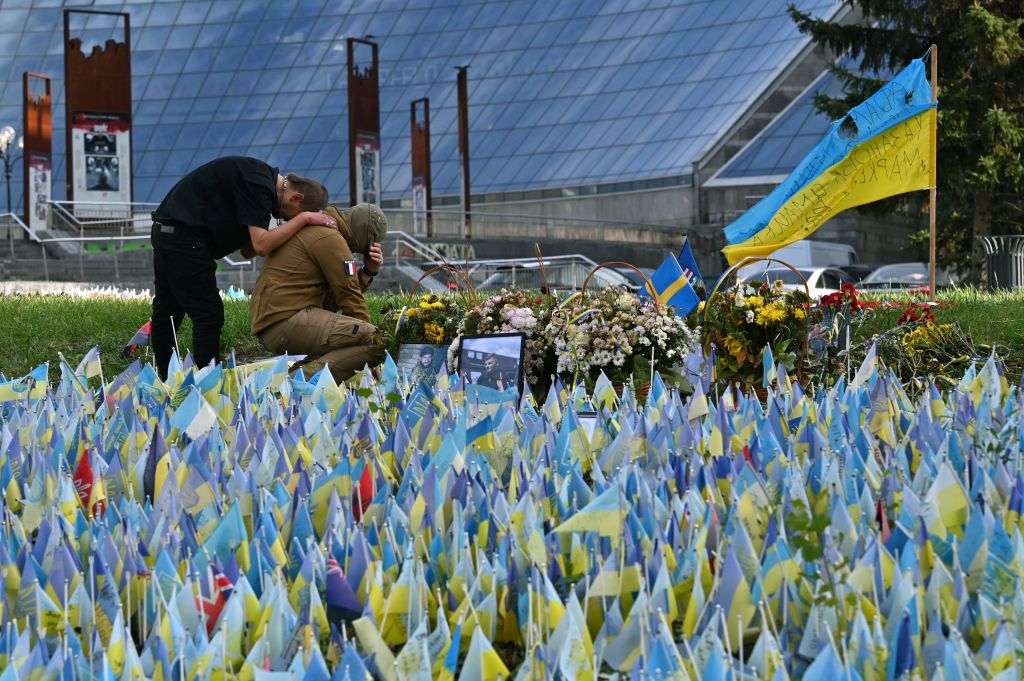MICK RYAN

This week saw the US House of Representatives finally elect a new Speaker after a long and rancorous debate. A bill to fund continued American support for Ukraine’s war effort is now high on the agenda. But newly elected Speaker Mike Johnson has an inauspicious voting record on Ukraine assistance. In some respects, the election of a US Speaker who has opposed aid to Ukraine is a harbinger of the headwinds facing Kyiv as it plans for what will be a difficult 2024.
Politics will prove rough for Ukraine in the year ahead. Both the United States and Russia have elections in 2024. In Russia, Vladimir Putin will seek to demonstrate that Russian forces have made gains before the election, and this is what is partially driving the elevated levels of Russian offensive operations in Ukraine.
The US situation will be more complicated. There is growing partisanship over support for Ukraine. A recent survey conducted by the Chicago Council on Global Affairs shows that fewer Republicans than Democrats support ongoing assistance to Ukraine, and that this gap is expanding. Donald Trump, front-runner for the Republican nomination, admires Putin more than Ukraine’s Volodymyr Zelenskyy, and is unlikely to support large packages of military and financial support for Ukraine.
The massive consumption of munitions, equipment and other items such as personnel equipment and fuel was a huge surprise to the global arms industry.
In Ukraine, 2024 was also supposed to be a presidential election year. However, with nearly 20 per cent of Ukraine occupied by Russian forces and polling places an obvious target for Russian artillery, missiles and drones, holding an election before the end of the war would be extraordinarily difficult. An extension to martial law in August this year also puts the 2024 elections in doubt. A delay to the election is certain to be a key element in Russian misinformation operations conducted next year in the West, with an intention to degrade support for Ukraine. It is also likely that putting off the elections will be part of the narrative used by some in the US Congress to justify cutting aid to Ukraine.
Strategically, Ukraine faces new difficulties because it is now competing with Israel for the time and attention of American and European leaders and policymakers. The focus of senior people is even more important than the crucial munitions that both Ukraine and Israel are drawing from their foreign supporters. With decreasing public support for the war, the attention and advocacy of leaders such as US President Joe Biden, UK Prime Minister Rishi Sunak and European Commission President Ursula von der Leyen is crucial for securing financial and military assistance.
At the same time, neither the United States nor European nations have yet adopted a clear or coordinated strategy for their Ukraine support. While political leaders use terms such as “we support Ukraine to the end”, this does not comprise a strategy. America and Europe appear to be undecided on the ultimate political objective for the war. Is it to defend Ukraine or defeat Russia? These are two very different strategic objectives, with different levels of support required. A decision on which of these two objectives is to be pursued is necessary, and until that decision is made, Ukraine will need to pursue what it sees as the best way ahead despite Western strategic indecision. A memorial for fallen soldiers in Independence Square, Kyiv, on 30 October, amid the Russian invasion of Ukraine (Sergei Supinsky/AFP via Getty Images)
A memorial for fallen soldiers in Independence Square, Kyiv, on 30 October, amid the Russian invasion of Ukraine (Sergei Supinsky/AFP via Getty Images)
 A memorial for fallen soldiers in Independence Square, Kyiv, on 30 October, amid the Russian invasion of Ukraine (Sergei Supinsky/AFP via Getty Images)
A memorial for fallen soldiers in Independence Square, Kyiv, on 30 October, amid the Russian invasion of Ukraine (Sergei Supinsky/AFP via Getty Images)A final component of the headwinds facing Ukraine in 2024 is industrial. The war between Ukraine and Russia is a war of industrial systems. The massive consumption of munitions and other items such as personnel equipment and fuel was a huge surprise to the global arms industry. The return to massed artillery and air defence missile consumption has outstripped the capacity of the market. Demand also exceeds supply for armoured vehicles and drones.
While the Americans and the Europeans have taken the initial steps to increase production, it is unlikely that Western defence production, and Ukraine’s indigenous production, will fully meet the needs of any 2024 offensives by Ukraine. Ukraine needs around 1.5 million rounds of ammunition annually. Europe can produce around 300,000 rounds per year and the Americans are building towards a total production of 1.2 million rounds per year. But at least some of this will be required to backfill stocks that have already been sent to Ukraine. And as the concurrent wars in Israel and Ukraine demonstrate, the US defence industrial base – and that of its allies – are not adequately prepared to support these wars and build up stocks to deter a war with China.
At the same time, Russia increased its defence budget and spent the past year increasing defence production. It is also sourcing defence materiel from the huge stocks of the North Koreans. While Ukrainian munition stocks may last for several more months, the combination of insufficient Western production, dwindling on-hand stocks in the militaries of Europe and the United States, and the increased supply to Russia means that Russia may have an advantage in munitions by the middle of 2024.
None of these headwinds portends disaster ahead for Ukraine, however. It is a nation that has demonstrated widespread individual heroism, societal resilience and a broad spirit of innovation. The political, strategic, and industrial challenges are solvable. But they will demand more attention from Ukrainian strategists – and more assistance from the West – to ensure that in 2024 they do not collectively and with other surprises in war overwhelm a nation that is fighting for its very existence.
No comments:
Post a Comment